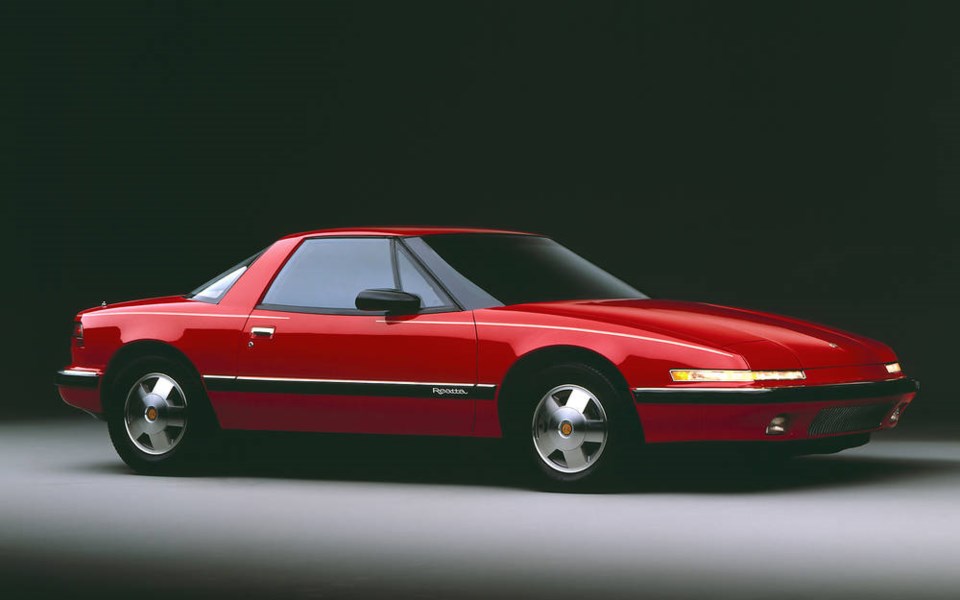When Buick’s chief engineer, Lloyd Reuss, was promoted to general manager of Buick in 1980, he wanted to make his mark by adding a two-passenger Buick to the line. He saw it as enhancing Buick’s image, generating more showroom traffic and lowering the average age of Buick buyers.
Buick had a well-established image as an upscale luxury family car, although it had also flirted with performance models like the Wildcat and Grand National. The car Reuss wanted was a two-passenger model.
The Buick Reatta, as it would be called, was aimed at keeping a foot in both the sporty and luxury camps. It would not be an out-and-out sports car, but a true American grand touring car with the luxury Buick buyers expected. It was hoped that good performance and attractive styling would make it a more affordable alternative to the Mercedes-Benz SL.
The original outline for the Reatta was established in 1982, and the design was largely finalized by ‘84. To save money, sell it to senior management and shorten development time, it drew heavily on existing Buick Riviera hardware.
It had unit construction and was powered by Buick’s 165-horsepower. 3.8-litre overhead valve V-6 transversely mounted and driving the front wheels through a four-speed automatic transaxle. While familiar and well proved hardware, it hardly projected the high-tech, exotic image of a Mercedes.
A new platform was designed with a wheelbase of just 2,502 millimetres. Suspension, steering and brake systems came from the Riviera, with some modifications.
It had fully independent suspension, in front via MacPherson struts while at the rear it had struts, control arms and a Corvette-type transverse plastic leaf spring. Anti-roll bars were fitted front and rear, and brakes were four-wheel discs with anti-lock.
Since GM had no spare production capacity, a former axle plant in Lansing, Michigan, was converted into the “Reatta Craft Center.” Replacing the traditional assembly line were automatically guided platforms moving the cars from one work station to the next. Platform advancement was controlled by the assemblers who had much longer than the typical 60 seconds to complete their tasks.
The Reatta’s styling was new and well executed, but not exciting. The front end was smooth and cleans with pop-up headlamps and an unobtrusive under-bumper grille. The galvanized steel body (except the plastic front fenders) was sleek and nicely proportioned with a black accent line/rub-rail running completely around the perimeter.
The short-tailed Reatta was a trim 4,643 mm long, but still provided ample luggage space in the trunk and bins behind the seats.
The interior was quite luxurious, the only jarring note being the too-demanding touchscreen cathode-ray-tube instrument panel. Lifted intact from the Riviera, its rectangular shape clashed with the Reatta’s smooth interior curves.
The Reatta coupe was introduced as a 1988 model early in the year, but by this time Buick’s emphasis and philosophy had shifted somewhat. The division’s aspiration now was to promote Buicks as “substantial, powerful and mature premium American motorcars.” A sporty two-seater seemed a little out of synch with this philosophy.
When tested by the motoring press the 1,533-kilogram Reatta’s performance proved quite adequate. Car and Driver reported zero to 100 km/h in 9.1 seconds and top speed of 196 km/h.
But testers complained that while the Reatta was smooth, comfortable and quiet, it lacked a GT car’s “soul.” Soul is difficult and intangible to define, but stepping from a Reatta into a Mercedes makes it immediately obvious.
During its first model year Buick sold just over 4,700 Reattas, far below the hoped-for 15,000. Sales climbed to 7,009 the following year.
Buick made some changes in the 1990 Reatta and added a convertible which, anachronistically, had a manually operated top. Instruments were now analog and a driver’s airbag was added. These changes helped perk up sales to 8,515, better but still disappointing.
The Reatta was carried into 1991 with horsepower increased by five to 170, but alas, its future was already sealed. After building only 1,618 ’91s, Buick discontinued it.
Although the Reatta was what it was conceived to be, it never really caught on. It didn’t attract enough traditional Buick buyers and was hard- pressed to entice customers away from the more established sporty or prestige marques. It was also bucking the reality that the two-seater market is always limited and specialized. Pontiac, for example, was discontinuing its Fiero, and Cadillac’s Allante was selling slowly.
While not a commercial success, the Reatta was a comfortable, good driving car with modern conveniences in a very manageable size. It could become a popular collectible, particularly the convertible, of which only 2,437 were built.



